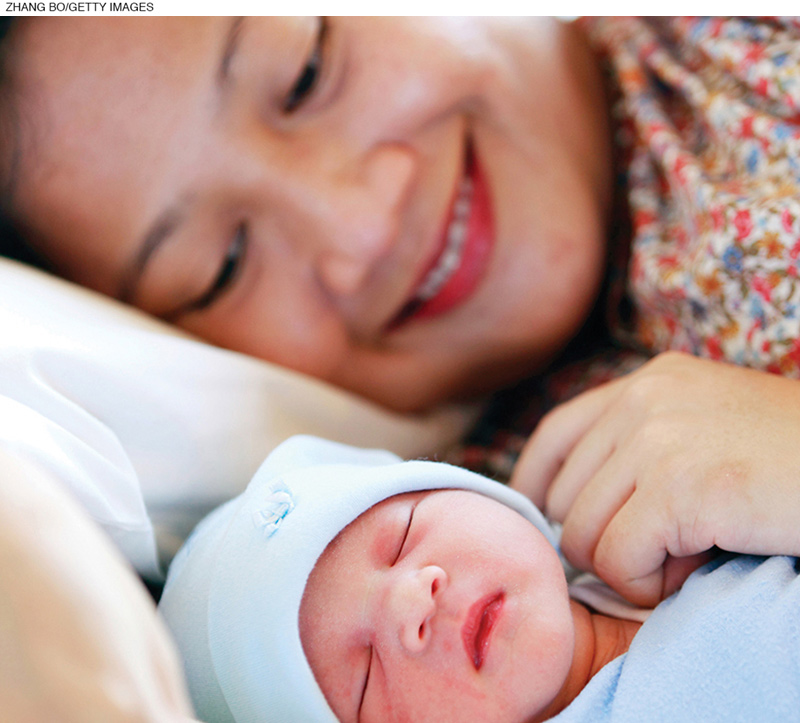Chapter Introduction

CHAPTER OUTLINE
Genes and Chromosomes
Variations Among People
More on Shared and Divergent Genes
OPPOSING PERSPECTIVES: Too Many Boys?
Twins
Genetic Interactions
Germinal: The First 14 Days
Embryo: From the Third Through the Eighth Week
Fetus: From the Ninth Week Until Birth
Finally, a Baby
The New Family
Abnormal Genes and Chromosomes
Harm to the Fetus
A VIEW FROM SCIENCE: Conflicting Advice
Prenatal Testing
A CASE TO STUDY: False Positives and False Negatives
Low Birthweight
Alcohol Use Disorder
Nearsightedness
Practical Applications
CHAPTER 2
THE BEGINNING
From Conception to Birth
WHAT WILL YOU KNOW?
How do genes affect each individual?
Do fathers have any role in pregnancy and birth?
How can serious birth disorders be avoided?
Is alcohol use disorder genetic or cultural?
Video: Prenatal Development and Birth: A Brief Overview
My daughter Elissa recently had her second child. Her husband and midwife were with her in the Labor Room of the Birthing Center; I was with Asa, age 5, in the Family Room. Periodically, Asa ran down the hall to see his parents. Usually the midwife let us enter, and Elissa smiled and asked him how he was doing. Sometimes we had to wait a minute. Then, contraction over, mother and son greeted each other again.
When the baby was born, the nurse came to tell us, “There’s a new person who wants to meet you.” Asa said, “Let me put this last Lego piece in.” He did, and brought his creation to show his parents, who introduced him to his breast-
The contrast between this 2014 birth and Elissa’s own arrival is stark. Back then, midwives were banned from my New York City hospital. Fathers were relegated to waiting rooms, as my husband, Martin, had been. The nurses did not let me hold Elissa until she was 24 hours old. Her older sisters were banned from the hospital floor where I stayed for 5 days.
The science of human development is not only about how individuals change over time, it is about how contexts and cultures change, as evident in the contrast between Elissa as newborn and Elissa as new mother. Some things endure: Both births, and indeed every pregnancy and birth, were miraculous.
Further, genes have been passed down for thousands of years. Every baby has the genes from both parents, so my grandson has one-
This chapter describes the unchanged biology of human genes, conception, prenatal development, and birth, as well as the vast differences in all four from one era, one culture, even one family to another. Possible harm is noted: causes and consequences of diseases, malnutrition, drugs, pollution, stress, and so on. Fathers, particularly, have become more active partners. All of us—